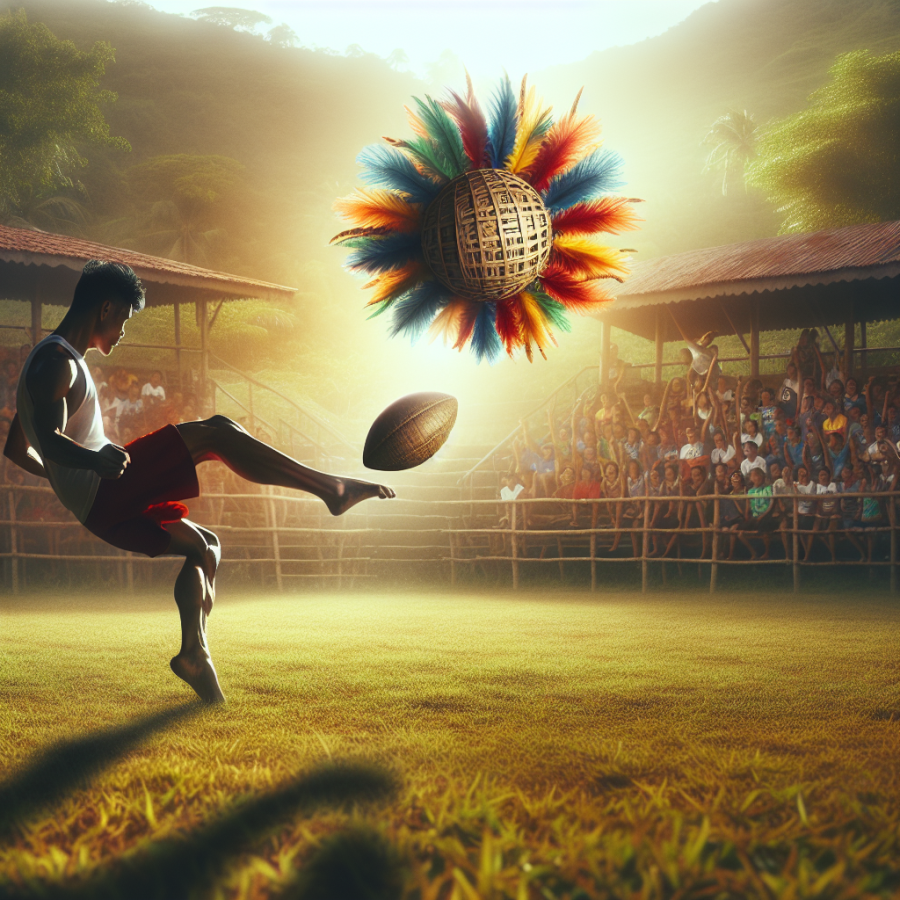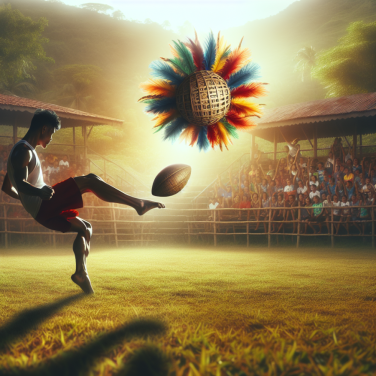Uncovering the Rich History of Sipa: A Cultural Treasure of the Philippines
Sipa, the traditional Filipino game, holds a storied past that is deeply interwoven with the cultural fabric of the Philippines. Deriving from the Malay word for "kick," sipa is a testament to the rich heritage and history that has been passed down through generations. This indigenous game, reminiscent of hacky sack or sepak takraw, is not just a display of physical prowess but a celebration of Filipino identity and communal spirit.
The roots of sipa can be traced back to the pre-colonial era of the Philippines, well before the Spanish occupation in the 16th century. Historical records and various accounts suggest that the game was widely played across the archipelago, with different regions having their own unique variations. It was a popular pastime among natives, played by both the royalty and the common folk. The simplicity of the game, requiring only a ball or a shuttlecock-like object called a "sipa," made it accessible to all, irrespective of social class.
The traditional version of sipa involved a woven rattan ball or a metal washer attached to a colorful tuft of straw or cloth. The objective was straightforward: players would kick the sipa into the air and attempt to keep it aloft for as long as possible using their feet, thighs, or the side of their body, without allowing it to touch the ground. It reinforced agility, precision, and endurance, and became an avenue for showcasing individual skill and finesse.
Sipa's prominence during the Philippines' pre-colonial period also extended to its role in ritual and religious practices. It was more than just entertainment; it was a ceremonial activity that held spiritual significance in some tribes. The game was often played during harvest festivals or communal feasts as a way to bring the community together and celebrate collective achievements.
The Spanish colonization of the Philippines brought about significant changes in Filipino culture, but sipa endured, albeit with some adaptations. Despite the introduction of new sports and games, sipa maintained its charm and continued to be a beloved recreational activity. During the American occupation, the game's popularity further increased, with the American soldiers often partaking in the game alongside the locals.
Over time, sipa has evolved from its informal roots into a more structured sport with standardized rules and internal competitions. It has been recognized as the national sport of the Philippines, a title that underscores its importance to the Filipino heritage.
Read also:
The Thrill of Harness Racing: Strategy and Speed
Mastering Sipa: Techniques and Training Tips for the Energetic Filipino Sport
Mastering the game of Sipa not only requires an understanding of its fundamental rules but also a dedication to developing agility, coordination, and precise timing. To truly excel in this energetic Filipino sport, one must employ a targeted approach to both techniques and training. Here are some tips to enhance your skills in Sipa:
1. **Start with the Basics**: Before attempting complex maneuvers, ensure you have a firm grasp of the basic kicks and taps used in Sipa. Practice the traditional kick using the side of your foot, as well as the inside and outside foot taps. Consistency in these basic moves is crucial.
2. **Strengthen Your Lower Body**: Sipa demands strong legs and a sturdy core. Incorporate exercises such as squats, lunges, and calf raises into your training routine to build the necessary muscle. Additionally, core workouts like planks and Russian twists will help maintain balance and control during gameplay.
3. **Work on Your Flexibility**: Incorporate dynamic stretching into your warm-up and static stretching into your cooldown. Flexibility is key for high kicks and quick directional changes. Yoga and Pilates can also complement your training by increasing your range of motion.
4. **Improve Coordination and Reaction Time**: Drills that enhance hand-eye coordination and reaction time are vital. Use activities such as catching or tapping a small ball with your feet, or practice Sipa with multiple players to refine your anticipatory skills and improve your ability to follow the game's rapid pace.
5. **Train with a Variety of Sipa Balls**: Familiarize yourself with different types of Sipa balls, such as the rattan ball or washer with ribbons. Each type has its own weight and aerodynamics, requiring subtle changes in technique. Practicing with diverse equipment will prepare you for any competition scenario.
6. **Use Footwear That Enhances Performance**: While Sipa can be played barefoot, wearing appropriate shoes can provide better grip and reduce the risk of injuries. Select lightweight sports shoes with a good feel for the surface, allowing you to execute quick and precise movements.
7. **Work on Your Endurance**: Sipa games can be lengthy and physically taxing. Develop your cardiovascular endurance through running, cycling, or swimming. This will ensure that you can maintain a high level of performance throughout the entire match.
8. **Practice Tactical Thinking**: Sipa isn't just physically demanding—it requires strategic thought.




